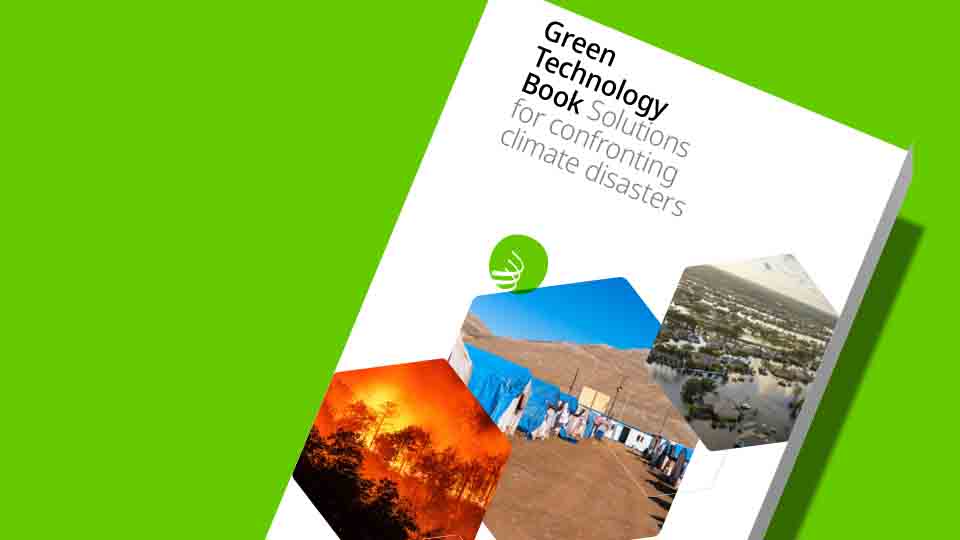

November 11, 2025
As extreme weather intensifies and disaster losses rise, the new edition arrives at a pivotal moment. “Climate disasters are no longer exceptional events—they are part of our shared reality,” WIPO Green Technology and Research Manager Peter Oksen said, opening the launch event.

The Green Technology Book: Solutions for Confronting Climate Disasters highlights how innovation is transforming the way societies prepare for, respond to, and recover from climate-driven crises. It showcases both cutting-edge and practical solutions—from AI-driven forecasting to modular shelters and resilient infrastructure—that are redefining disaster risk management. The book illustrates the transformative power of innovation, underpinned by an efficient intellectual property rights system.
The COP launch event brought together a diverse range of global leaders involved in technology, innovation, climate change and disaster response to highlight how they deploy solutions for climate disaster preparedness and response. These included the Climate Technology Centre and Network (CTCN), United Nations office for Disaster Risk Reduction (UNDRR), World Meteorological Organization (WMO), Egyptian Academy of Scientific Research and Technology (ASRT), Natura, and the Adaptation Fund.
The partners underscored the prevalence of disasters around the world and their increasing threat as climate impacts worsen with each passing year. They also emphasized technology’s role in both preparing for and responding to disasters. Disaster technologies are incredibly diverse – ranging from very simple rain gauges to the most complex satellite systems. The key is to combine these low and high-tech solutions to help communities and societies respond more efficiently and effectively.

Angela Pinhati, Chief Sustainability Officer and WIPO GREEN Ambassador to Brazil, discussed the importance of vulnerability assessments in increasing resilience among Natura’s suppliers. Loretta Hieber Girardet of UNDRR spoke about the importance of artificial intelligence and its power to transform disaster risk reduction. AI, she said, enables multi-source data to be analyzed together to understand how risks interact and cascade. Amir Delju of WMO emphasized the importance of technology in advancing earth observation, noting the immense progress in computer and data science that informs our understanding of interactions between the atmosphere, earth, and the ocean. And Ms. Ariesta Ningrum, Director of the CTCN, highlighted the role technology plays in projects in Sudan and Nigeria.
Mr. Oksen concluded the event by underscoring the use of technology and innovation as part, if not all, of the solution, and emphasizing that available solutions are ready to meet climate challenges despite failures of political will and overcautious policies. WIPO Green continues to combat climate change through spreading the word about the positive role technology can play.
Key messages from the book
Discover all the Green Technology Book editions
Learn more about WIPO GREEN